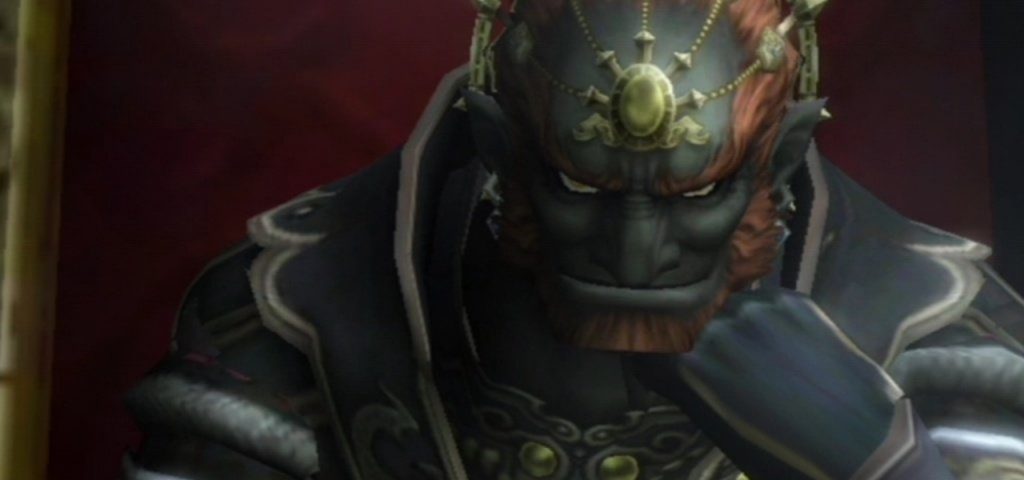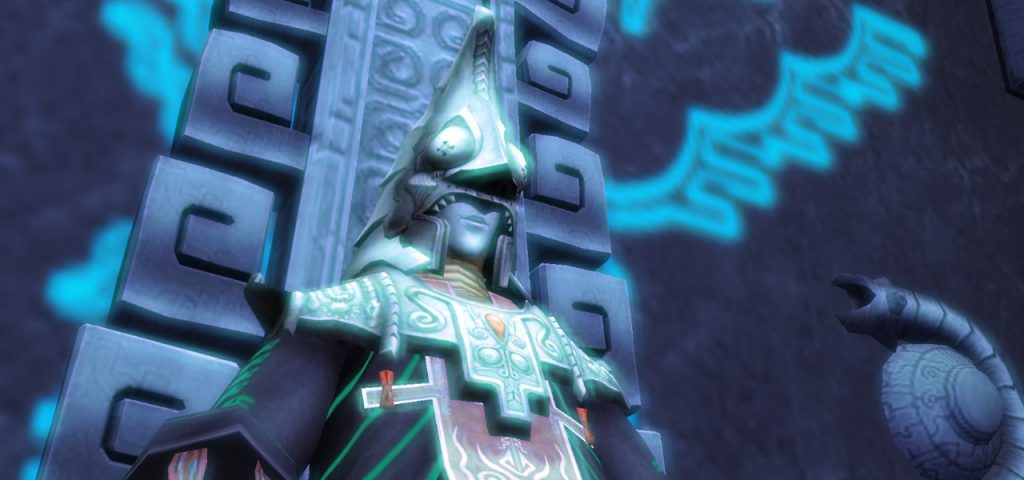Unhinged and Misunderstood: Zant Was Never the Main Villain of Twilight Princess
Posted on May 25 2021 by Charles Xavier

I hear it all the time: “Ganondorf undermined Zant in Twilight Princess!” These words appear across my screen, and I shake my head. I get why people feel this way, but I can never agree on it. I think Zant was executed perfectly in his own way; between his visual presentation and the story in general. I think the problem is that, when Ganondorf is introduced, Zant remains the threat we are actively fighting. This leaves the Usurper King in a precarious spot; he is the star villain up until a point, then suddenly he isn’t.
It could be argued that Twilight Princess is Zant’s game, that he should have been the final boss we fight, and Ganondorf shouldn’t have been added at all. If you feel this way then Zant succeeded at his deception. Zant is all shock value to the player. From the first time we see Zant, it’s subtly conveyed that this man isn’t strong, there is something very off about him; and it’s these cues which are often overlooked that make it obvious that Zant isn’t the main antagonist.
Ganondorf Wasn’t Shoehorned into The Game

Before we take the dive, let’s clear the waters; Ganondorf was not added into Twilight Princess too late in the game. Some people feel that since we don’t see Ganondorf until the midway point of the game, and that his addition adds very little to the plot, he could be erased from the story somewhat easily. Honestly, this isn’t very different from other games though; we typically don’t see much of Ganondorf in most Zelda titles. Ironically, this is one of those rare cases where he gets a decent amount of screen time. The plot as is feels pretty cohesive anyway. Elements like the Triforce and the Master Sword only work if we’re eventually going to face him, and those things are implemented pretty early on. Zant also foreshadows the reveal, and it all plays out satisfying enough.
It’s only when things begin to get picked apart that the plot gets complicated. If we take away the Triforce, there is no reasoning for Link and Zelda to remain aware of the blankets of twilight. Without Ganondorf, there is also no explanation for what makes Zant’s new power different from the ancient Twili magic. And to put this to rest: Twilight Princess is a distant Ocarina of Time sequel – Ganondorf was destined to be in this game. And if in some alternate reality he wasn’t, I think we’d be seeing content about how it was a tragedy that his story within the Child Timeline wasn’t expanded.
Even alongside Ganondorf, Zant is characterized very well in the role of a mere puppet to the overall scheme, and Zant’s status as a figurehead is not only telegraphed to the players via dialogue, but through the cinematography of the cutscenes as well.
Cinematography Breaks Zant’s Deception
In terms of the plot being moved along with text, we don’t get a hint that Zant isn’t the main antagonist until after the Lakebed Temple is completed, which is at least a quarter of the way through the game. The actual reveal comes along at the end of the Arbiter’s Grounds, so at about the halfway point of the game. However, visually, from the first time we see Zant, it’s subtly made apparent that he is not as powerful as he leads on.
His first appearance is a straight camera shot on him, but notably he is very far away. For the rest of this cutscene the camera is always fixed on him from strange tilted angles, while also zooming in on him in a spiraling fashion. What is the goal here with these shots? Well, it’s not to establish him as a dominant character (there are certainly better ways to do that visually); the point is to make it obvious that Zant isn’t a real leader, and an unstable individual by using camera angles that are so jarring that players feel uncomfortable.
His costume is also very telling. Adorned with a helmet that is grotesque, and clothed with flashy robes, he is attempting to look more menacingly than he really is. It’s a tactic of appearing dominant through fear rather than actually possessing the strategy and cunning to be a real leader.
During his second appearance the strange camera angles persist, and we get that unnerving scene where he is holding Midna captive. While standing uncomfortably close to her, Zant lowers the tongue portion of his mask to show off his spikey teeth. At this point he has already dropped the clue that he is working with someone rather than calling the shots. His final few scenes show just how far into madness he has really devolved, and it’s clear he was simply a lost soul given guidance by Ganondorf instead of the natural-born leader he was pretending to be. Beneath his mask, we see a scrawny man who looks like a pushover. He puts up a decent fight, but in the end, none of his magic can prevail. He is resigned to aimlessly attacking, lacking coordination or skill, before finally being bested.
Conclusion

Many people will continue to wish Zant wasn’t “hijacked by Ganon” in Twilight Princess, but this role suits Zant well. His whole backstory makes his role as a puppet feel so natural that he is by far the best character to be manipulated by Ganondorf. Typically, a puppet of Ganondorf has no notable character development or backstory. Agahnim would be the exception since he has a backstory, but by the end of the game, we learn he was an alter-ego, or bunshin, of Ganon.
Without Zant, the Zelda series would be barren of compelling figureheads. So while some might wish Zant had been the main villain, I will always appreciate that he wasn’t, and that he managed to be a very interesting character despite being a pawn of Ganondorf.
Charles is a Senior Editor at Zelda Dungeon. He is a massive fan of Star Wars, The Lord of the Rings, and Marvel Comics. He enjoys Skittles immensely. Follow him on Twitter to keep up with his recent playthrough of Breath of the Wild!

Charles is a Senior Editor at Zelda Dungeon. He is a Visual Development artist focused on enviroments and pitch paintings. Check out his Instagram and Twitter to see his latest artworks, a lot of which is Zelda fan art! His favorite candy is Skittles – he feels the world should know this.



